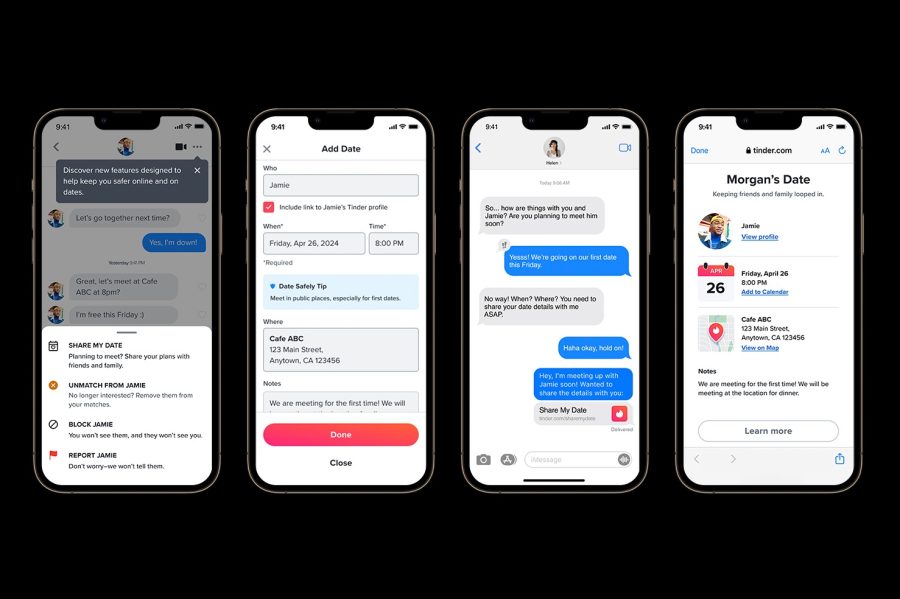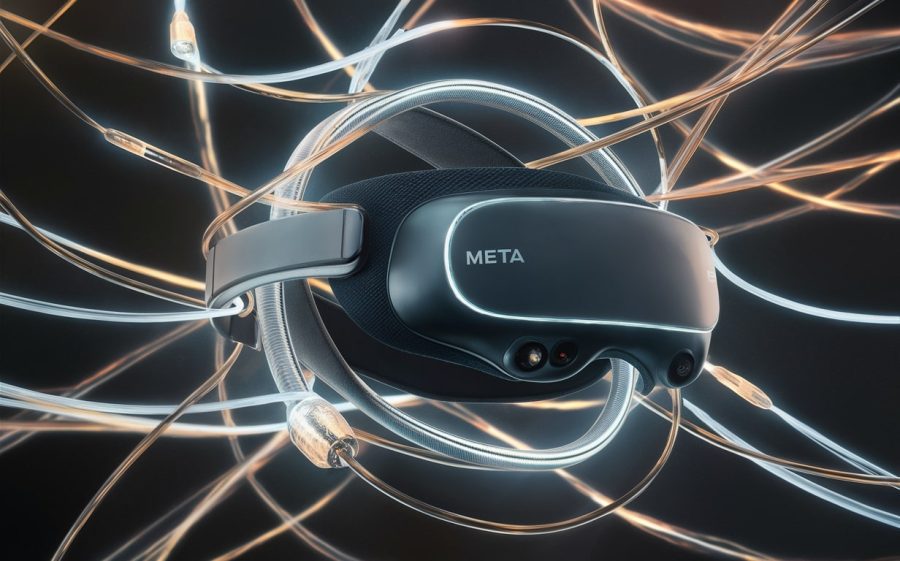Assume, if you will, that BlackBerry never existed. That should be easy enough, especially when Research In Motion co-CEO Mike Lazaridis personally shows you how.
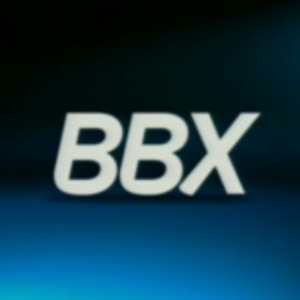
A new tablet-oriented, multitouch operating system called BBX has been introduced to a legion of developers who are already entrenched in Android, iOS, and HTML5. Essentially, a new Research In Motion was launched as well. The old RIM, a provider of enterprise-grade secure messaging and innovative devices, exited the back door of history following last week’s massive e-mail failure.
“The whole company is aligning behind this single platform and single vision,” proclaimed Lazaridis at Tuesday’s keynote speech for the BlackBerry DevCon developers’ conference in San Francisco. “We’re taking the power of QNX, open standards, and the best of BlackBerry, and building a powerful development platform for BlackBerry developers.”
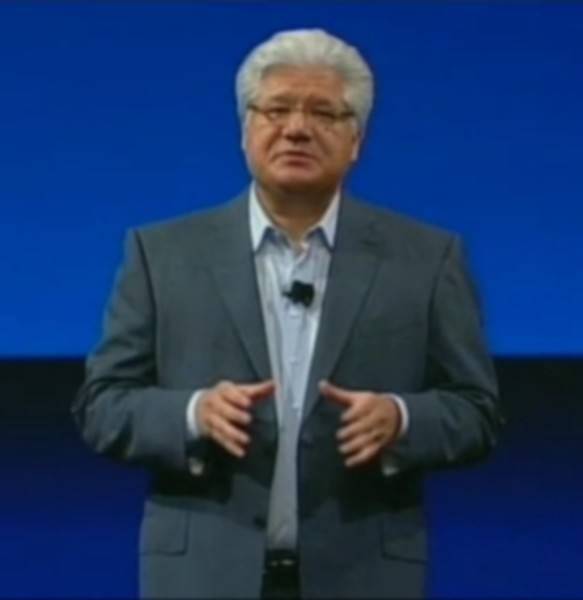
“The best of BlackBerry” evidently no longer includes what the old RIM used to refer to as the “services, technology, and infrastructure” that put the company on the map. Although there are powerful arguments that the current BlackBerry OS is ill-equipped to compete with today’s iOS and Android devices, when a platform dead-ends, its developers need somewhere to go where the mission, the target market, and the tools and techniques are at least somewhat the same. The term “BlackBerry smartphones” did make a cameo appearance in slides during Tuesday’s keynote, but the spoken language and demonstrated content made it extremely clear: RIM’s PlayBook is the multitouch, keyboard-less tablet device that will be the standard for all future BlackBerry development, and BBX apps for “BlackBerry smartphones” — whatever they end up becoming — will be scaled down to size.
At the end of the BB OS 7 roadmap is a cliff, and the message from RIM this morning is, it’s fun to jump.
“We’re opening up the platform to a wealth of open source libraries and open source software, and we can really accelerate now,” said Lazaridis.
The new BBX development platform, built in conjunction with QNX (the maker of the PlayBook’s microkernel), is a huge work in progress. QNX Software Systems President Dan Dodge told attendees this morning that the platform’s philosophy would be fully open source, but in so doing, essentially admitted the platform was open to ideas.
BBX is built around the QNX microkernel embedded operating system. There’s no question QNX has already been innovative in many respects. It’s a POSIX system, meaning it’s a certified UNIX for portable devices. (When the acronym was originally coined, “portable” encompassed those computers that could fit comfortably in the trunk of your car. Microsoft has made POSIX subsystems going back to Windows NT.)

“If you look under the hood at the technology view… BBX will come with a fully POSIX-certified kernel, open standards. But its microkernel architecture brings some unique values, so you get reliability and security,” reported QNX’s Dodge. “And to my knowledge, we have the only kernel that is a certified secure kernel and certified safe kernel.”
QNX does not concern itself directly with the front ends, graphics engines, and user interfaces of systems; instead, it supports open source libraries that take care of those jobs — whatever libraries a manufacturer may require.
“But we recognize that application developers out there may have their own particular library that they love and they use,” explained Dodge. “So what we’re going to do is port all the open source libraries that are out there, test them, and post them so our developers can download those libraries, and they will work immediately. They can include them as part of their application, and drop them right on the device. And if we see a lot of developers using the same libraries, we’ll move them into the system libraries so they become part of the base BBX platform.”
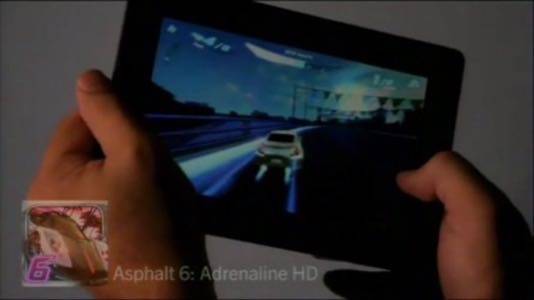
The PlayBook with the new BBX is by no means unimpressive. RIM invited graphics and gaming libraries developers on stage to demonstrate the clarity and responsiveness of the device, with OpenGL and Unity 3D integrated into the operating system, and support for 3D environments libraries including from Dead Space maker Square Enix.

Indeed, game developers for PCs will have a relatively easy time exporting their game assets to the PlayBook. And as Lazaridis directly implied, leaving hints that appeared intentionally designed to be discovered, the HDMI video output and 5.1 surround sound could make the PlayBook the most innovative and adaptive game controller since Nintendo’s Wii.
When Unity’s mobile games engineer Tracy Erickson appeared on stage to demonstrate the multitouch responsiveness of a 3D game running under BBX, Lazaridis couldn’t help but notice how the game’s controls relied only upon the user’s thumbs. He then openly reminisced about the old days, when BlackBerry users everywhere typed messages to each other with their thumbs. Ah, the old days!
If developers are interested in a “bridge” platform for apps that address BlackBerry’s existing users along with current and future PlayBook users, then this class of applications must be created now. The tool for this is HTML5.
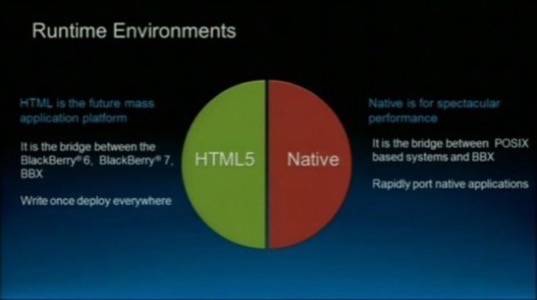
That said, BBX employs its own native graphics library, designed to be addressable through HTML5 but not a part of BB OS 7. Its name is Cascades. Think of it as RIM’s counterpart to Microsoft’s Metro library for Windows 8 tablets. It includes technologies that RIM acquired last December through TAT (The Astonishing Tribe), a Sweden-based design firm; and will be implemented through Web apps technologies that RIM acquired back in August 2009 through Torch Mobile.

The first iterations of Cascades design resembled BlackBerry not in the least. For a photo browsing application, a series of full-color glossy pages floated down from the sky as if being dropped by a careless courier. They had flow and movement, and even a comfortable degree of messiness that’s uncharacteristic of BlackBerry style up to now.

But then there was a messaging and e-mail application. E-mail, for those of you who are too young to remember, was the service that launched RIM. The Cascades prototype messaging app projected a kind of word cloud containing live heuristics of the terms and phrases your friends would be sharing or tweeting over the various social services. The relative volume and abundance of these terms creates ripples in the live heuristic waves, like a spastic chambermaid flapping a handful of rainbow bedsheets. The result not only ceased to resemble e-mail in any known form or format. It ceased to make much sense, which is most unusual for BlackBerry.
It’s difficult to imagine the union of the two sets of customers RIM is trying to appease with this: the veteran BlackBerry users with the prospective PlayBook users.

There does continue to be some vision of PlayBook, and devices based on it, as an enterprise-managed tool. As RIM’s enterprise VP Alan Panezic demonstrated, PlayBooks with BBX will be provisioned by data servers, similar to how they provision virtual desktops today. The provisioning process determines which apps the PlayBook user sees on her home screen, as well as which optional apps are available to her from the AppWorld store. Companies can annex virtual AppWorld departments all to themselves, featuring only those apps that follow corporate policies.
What makes today’s demonstration of RIM’s BBX platform so baffling is not the technology of the device — which is outstanding, from what we’ve seen thus far. It’s that RIM, of all companies, has failed to define the underlying services which support it. Tablet computing has been “forthcoming” for nearly two decades, but for the public at large, Apple invented it in January 2010. When it did so, Apple had already established a strong set of support services around iTunes, which enabled users who already had iPhones to embrace this new device along with newcomers.
We can forgive most other manufacturers for not having learned the lesson of the value of underlying services. But not RIM, which appeared to have learned that lesson the right way the first time: with a patented back-end secure messaging system that, at least up until last week, was the envy of the modern world. RIM got this right before Apple got this right. It would appear today that RIM has spent so much time re-inventing its devices (over two years in R&D now) that it has neglected its infrastructure. If RIM cannot back up BBX with as firm a foundation as BlackBerry devices had in 2006, then BBX will be about as meaningful in the modern context of small devices as webOS.








